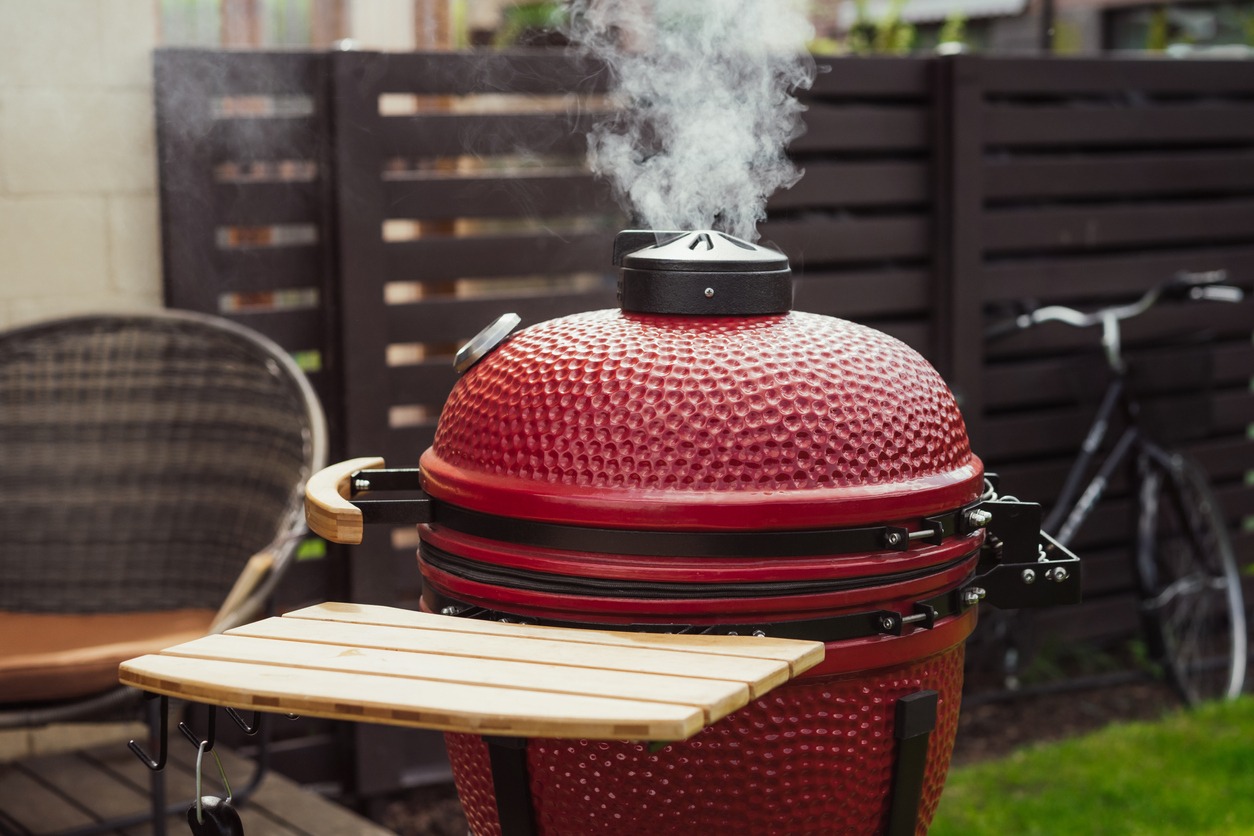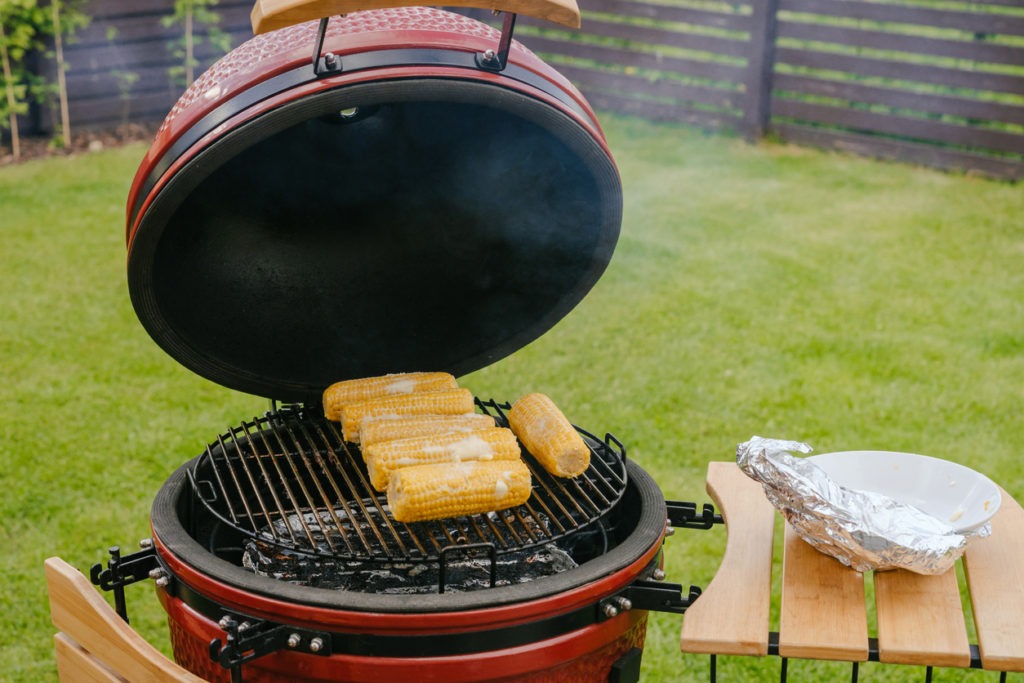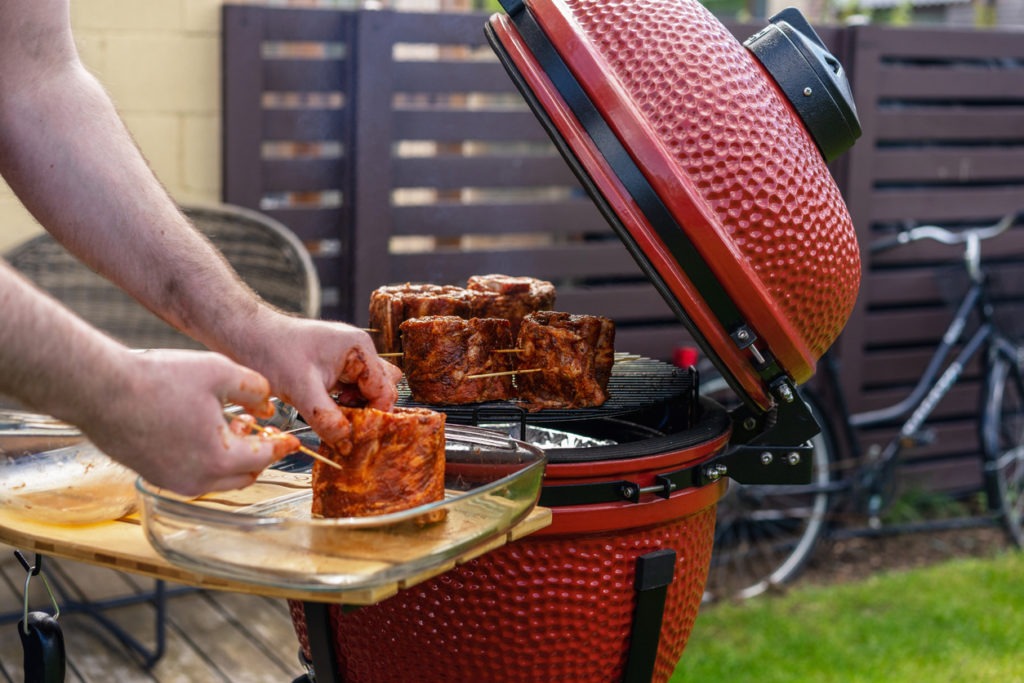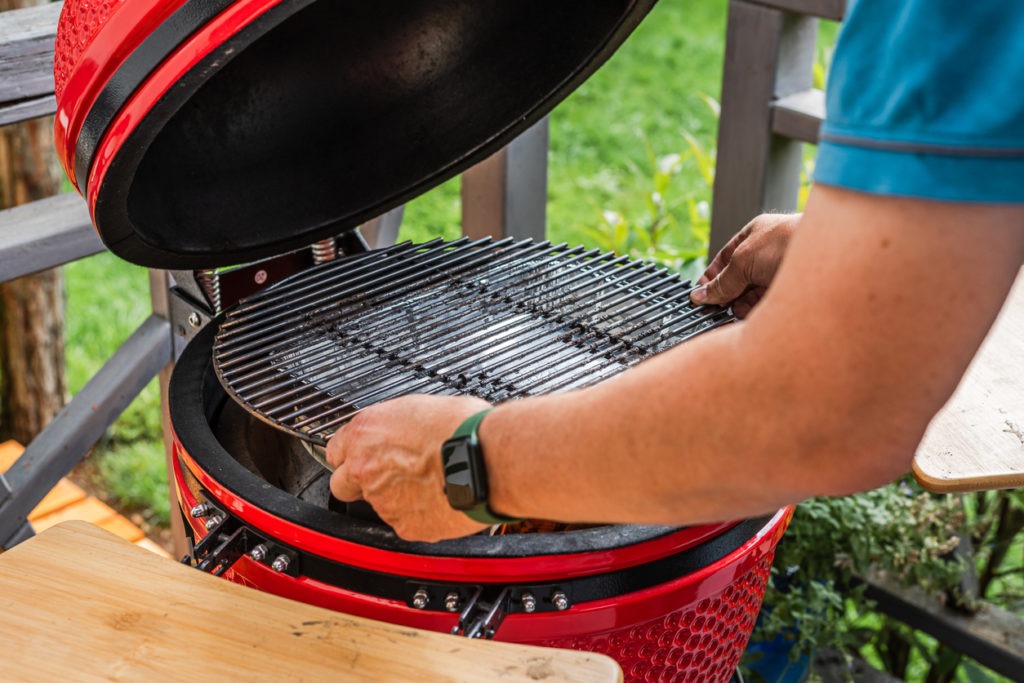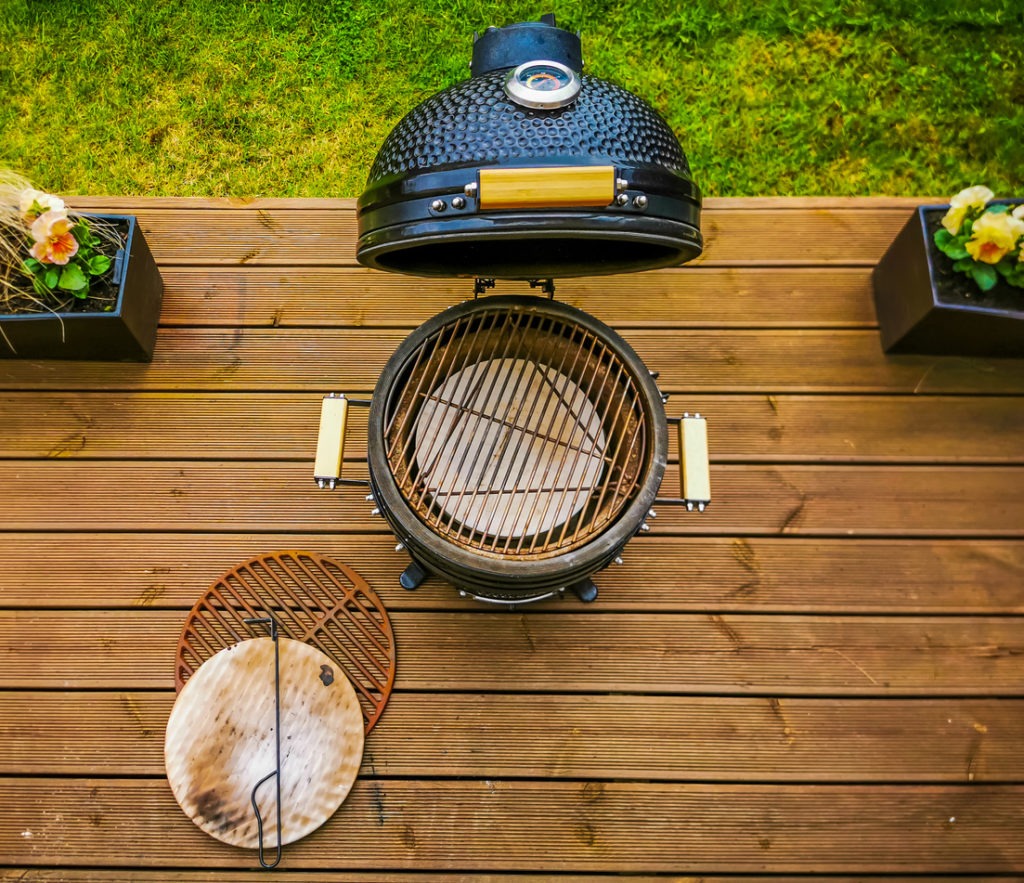Some people enjoy cooking, and each has their preferences regarding cooking styles and using different utensils and apparatuses. Some people prefer kitchenware made of ceramic. A few may favor using ceramic utensils because they can retain heat much more effectively than any other materials available in the market. Most foods and ingredients will not stick to ceramic kitchenware as the material has a smooth surface and doesn’t have pores where food may sometimes get stuck.
Although ceramic cookware is popular today, the one type of ceramic grill that is not as widely used is the kamado grill. Cast iron and stainless steel are more commonly used for grilling. Still, ceramic ones can be just as effective—and sometimes even better—because of their several benefits compared to most materials used for grilling.
What Is a Ceramic Grill?
Ceramic grills are a great choice for cooking enthusiasts passionate about barbecuing. They are made from clay, which helps them retain heat more efficiently than other materials. This makes it easier to cook food evenly and quickly. Ceramic grills don’t require much maintenance and last longer than other grills.
If you love barbecuing but don’t want to spend hours tending to your grill, then a ceramic grill may be right! These grills can be used with charcoal or wood chips, giving your meat the smokey flavor everyone loves! You can even create delicious desserts with these grills!
How Does a Ceramic Grill Work?
A ceramic grill works by using natural gas as its fuel source. The gas is ignited in the burner section of the grill and then travels through tubes to heat up the ceramic top. Once it reaches its desired temperature, it flows back down into the burner compartment and waits for you to use it again.
The ceramic top is usually made from high-quality porcelain that can withstand extreme temperatures without breaking or cracking. Even after you’ve cooked several meals on it, there’s little chance of damage occurring due to overheating since the cooking surface is ceramic with a high melting point. There’s no heat transfer between foods cooked at different temperatures (which can lead to burning).
Ceramic grills come with built-in features like infrared burners for faster heating times, so you know what kind of cooking experience you’re getting yourself into before you even start cooking!
History of the Ceramic Grill
Now that we know the advantages of ceramic over other cooking materials let’s learn how ceramic grilling started. And how it evolved into the excellent cookware, it is today.
Clay pot cooking is a 3000-year-old method of grilling ingredients in a clay pot that originated in China. The practice is believed to have been inspired by the discovery that clay pots retain heat better than other vessels and produce better-tasting dishes because most of the moisture or juices found in the cooked food are still present no matter how high the heat is on the pot.
The Chinese taught the Japanese how to cook rice in clay pots from 300 to 500 AD, resulting in the Japanese inventing another cookware that uses clay, the mushikamado.
Mushikamado, known as “rice cooker” in English, is a clay pot used in Japanese cuisine for centuries. The pot retains moisture and allows the rice it produces to be soft and fluffy, a texture that has become the standard for rice in Japan.
After the invention of the mushikamado, the Japanese found other ways to use the cookware other than for rice. To cook meat, they began fitting grates or grills on top of the mushikamado, thus becoming the first Kamado grill.
After World War II, US soldiers were amazed by the mushikamado. This Japanese cooking device can cook great-tasting food. These soldiers brought several mushikamados back to the US and started using them in their homes. They began calling the grill “kamado” to shorten the name mushikamado.
Many people started jumping on the Kamado bandwagon, ordering grills overseas. As a result, several companies imported the Kamado grill to make it easier for people to buy. One of these importing companies was owned by Ed Fisher. He eventually created his company’s mushikamado so they wouldn’t have to import grills.
Fisher soon realized that the materials used for his Kamado grills were not high-quality and would crumble after a few years. So he sought new materials to use for his grill, and by 1974—just four years later—he had already decided what the material should be used for his new and improved Kamado grill: ceramic, which has the same, or sometimes even better, heat-retaining qualities as clay but is more rigid and durable.
Ceramic grills were a big hit, as thousands or millions of people bought them to upgrade their existing Kamado grill, which is made of clay or cement. Ed Fisher’s company soon became known as Big Green Egg, a name they got from the shape and color of their Kamado grill.
How to Properly Use a Ceramic Grill?
The ceramic grill is a simple, reliable way to cook food. It’s easy to use and clean, but it takes some time. Here’s what you need to know about using a ceramic grill:
- The first step is to preheat the grill. You can turn on your stove and place the grill over high heat for 10 minutes.
- Put your food on the grill and close the lid. It would be best if you only opened the lid when necessary, as this will cause moisture loss from your food and might change its flavor and texture.
- Remove your food from the grill when it has reached an internal temperature of 160 degrees Fahrenheit (71 degrees Celsius). Most bacteria cannot survive at temperatures above 160 degrees Fahrenheit (71 degrees Celsius).
Benefits of Ceramic Cookware
As we have previously mentioned, ceramic cookware retains heat evenly throughout the surface of the cookware. The ceramic material can ensure that foods or ingredients are cooked evenly while on the cookware. In addition, ceramic cookware is often considered the safest to use for cooking because it doesn’t contain any chemical residues or harmful elements like some materials might.
For example, Non-stick pans are coated with perfluoroalkyl (PFA), a type of chemical that creates a slick and slippery surface on metal pans. The coating can guarantee that food won’t stick to your cookware for a short time. Still, the smooth substance will eventually peel off or turn to liquid again after continuous use. It may contaminate your food due to being overexposed to high heat. Research shows that PFA might cause severe bodily complications, such as organ failure and infertility.
Some stainless steel pans may also contain harmful chemicals or substances. This type of pan sometimes has copper at the bottom, which is used to distribute heat evenly in the pan. However, some copper may accidentally appear on the pan’s surface. Once that is mixed with our food and consumed, it can cause problems in our body, specifically the digestive system.
Ceramic cookware is the safest material for cookware since it does not contain any harmful substances. It is made from minerals found in the earth’s crust and water. It also doesn’t need any chemicals or substances to smooth out its surface, making it naturally non-stick.
You may not need ceramic’s non-stick qualities for grills. Still, its ability to cook food evenly is essential for putting out the best steaks and the finest grilled dishes for family picnics or get-togethers.
Things to Consider When Buying a Ceramic Grill
If you’re looking for a ceramic grill, there’s no shortage of options. But which one is right for you?
If you’re not sure, don’t worry! We’ve got the basics covered. Here are some things to consider when buying a ceramic grill:
Quality Build Material
One of the most important things to consider when buying a ceramic grill is the quality of the build material. You want something that will last you for years, and you don’t want it to break easily.
Ceramic grills are made with different materials. Some are made with cast iron, some are stainless steel, some are aluminum, and others are porcelain-coated metal. While some may be better than others in terms of durability, they all have pros and cons.
Cast iron is a durable material that heats up very slowly and evenly. Still, it’s heavy and difficult to clean up after. Stainless steel heats up quickly and evenly, but it needs regular cleaning because it can get dirty fast (and it’s not as durable as cast iron). Aluminum heats up quickly and evenly, but it’s not as durable as stainless steel or cast iron (it can dent easily). Porcelain-coated metal heats up quickly and evenly, but it has a shorter lifespan than stainless steel or cast iron (it wears down faster).
Size
The size will be a big consideration when looking for a new ceramic grill. If you’re trying to cook for a crowd or don’t have much space in your kitchen, you’ll want to ensure that the grill you choose has enough room to cook what you need. But if you’re cooking for yourself, getting a smaller grill is fine—you might find it easier to use!
There are many different sizes of ceramic grills on the market: from small personal ones that can fit in one hand all the way up to larger ones that are meant for parties and gatherings. The best thing about ceramic grills is that they don’t take up much space—they’re easy to store away when not in use.
Warranty
Warranties are one of the most important things to look for in any purchase, and they can be even more important when it comes to grills. Grills are especially likely to get damaged due to their high-temperature usage. If you don’t have a good warranty, your new grill might not last long enough for you to recoup the money you spent on it.
If you buy a ceramic grill with a low-quality warranty, keep in mind that even if it lasts longer than expected, it will break down at some point – and when it does break down, you’ll have no recourse but to buy another one.
Grills with good warranties tend to be made better than those with bad ones—so it’s worth investing in something that will last longer and work better for years.
Ash Trays
For starters, ashtrays are an important feature. The size of your ashtray should match the size of your grill. If you have a small grill, don’t buy an oversized ashtray—you’ll end up with extra space that isn’t being used. You can also consider whether or not you want to keep the ashes in the same place throughout the cooking process. If you do, consider getting an ashtray that has a place for charcoal and ash storage.
Design Features
If you’re looking for a grill, you’ll want to consider the design features of each. Ceramic grills are often designed with a sleek, modern look. But some options have a more classic feel and look. If you prefer contemporary designs, you’ll find plenty of ceramic grills. If you’re looking for something more rustic or classic, you’ll have fewer options.
Some ceramic grills come in colors other than black or gray. They may have red or blue accents that can add pizazz to your outdoor space. You can also find ceramic grills with more decorative patterns, like stripes or checks. If you’re looking for something with extra flair, these could be perfect for your needs!
Top Vents
This is one of the most important considerations when buying a ceramic grill. If a top vent is not working correctly, your food will not cook properly, and you may end up with a mess on your hands. Top vents are located on the top of the grill and allow you to control oxygen flow into your grill. If this is not working correctly, it can affect how well your food cooks and how long it takes to cook.
If you consider buying a ceramic grill, ensure the model has adjustable top vents. This allows you to control how much heat gets in and out of the grill, which will help prevent overcooking or burning of your food. You can also use these vents to adjust how much smoke comes out of the grill if you want to cook something with less smoke flavor than normal, such as vegetables.
Ash Grates
Ash grates are an important thing to consider when buying a ceramic grill. While some grills come with them, others do not. You can buy them separately and attach them yourself if yours does not.
The main purpose of an ash grate is to catch any ash that falls from the food being cooked on top of the grill. This ash can get very hot, so it’s important to keep it contained to prevent fires or injuries.
Some people also use their ash grates as a space for cooking small pieces of meat or vegetables. You can cook directly over your fire if you have one, or place the food on top of the grate without worrying about burning yourself when you try to take it off later!
Cooking Grates
If you’re in the market for a new ceramic grill, you may wonder what to look for when shopping. If you’re looking to replace an old one or upgrade your current model, a few key features will make all the difference. One of these features is cooking grates.
Grills come with either metal or porcelain cooking grates. Porcelain grates are more durable and heat evenly but can crack over time. Metal grates have higher heat retention and conductivity but are more likely to warp.
If you plan on using your grill frequently, opt for a porcelain grate made from aluminum oxide (also called alumina). This material is harder than steel and resistant to corrosion—it won’t chip or rust over time as other porcelain materials will.
Cooking Space
A ceramic grill’s cooking space is where you can cook on top of the grill. This is usually measured in square inches and can vary from just a few square inches to several hundred square inches. The more cooking space you have, the more food you can cook at once, which is great for large gatherings or if you want to make a lot of burgers at once. Suppose you’re planning on using your new barbecue for small gatherings or just making dinner for yourself and your family. In that case, having a smaller cooking space might be fine.
How much does a Ceramic Grill Cost?
Ceramic grills are a great alternative to traditional barbecue grills. They cook food more slowly and evenly, which means you get a better flavor and don’t have to worry about the charring that can happen with a regular grill. They’re also great for people who don’t have much space or want something easy to clean up.
But how much does a ceramic grill cost? We’ve got you covered! Here are some tips on how much you can expect to pay for these beautiful art pieces.
- Ceramic grills range in price from $100-$500+. If you’re looking for something high-quality and made from materials like cast iron, you can expect to pay at least $200+.
- If you buy your ceramic grill online, expect it to cost anywhere from $100-$200+ less than if you had bought it in person at a store (because shipping is usually free!).
- If you go with a cheaper model, make sure it’s made from good quality materials—you don’t want any cracks or chips that could affect how your food cooks!
Wrapping It Up
If you’re looking for an easy way to make your next meal, look no further than a ceramic grill. These grills are the perfect solution for busy chef who wants to spend more time with their family and less time in the kitchen.
Ceramic grills are a growing trend in the food industry because they’re versatile, easy to use, and fun! They come in all shapes and sizes, so whether you want to cook just a few pieces of chicken or grill an entire meal for your family, there’s a ceramic grill out there that will fit your needs perfectly.
If you want to start using a ceramic grill in your kitchen today, we’ve put together this guide so that you can learn everything you need to know before making your first purchase.
